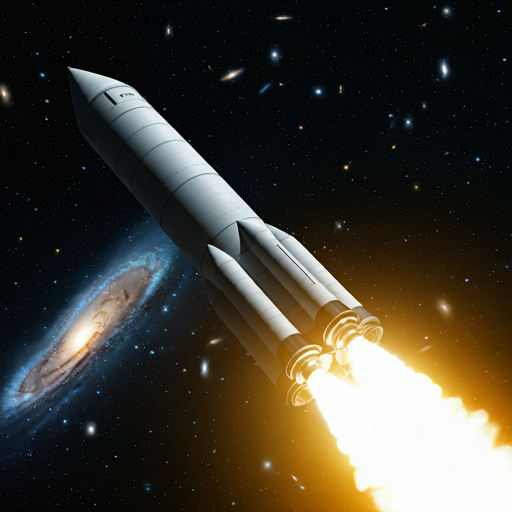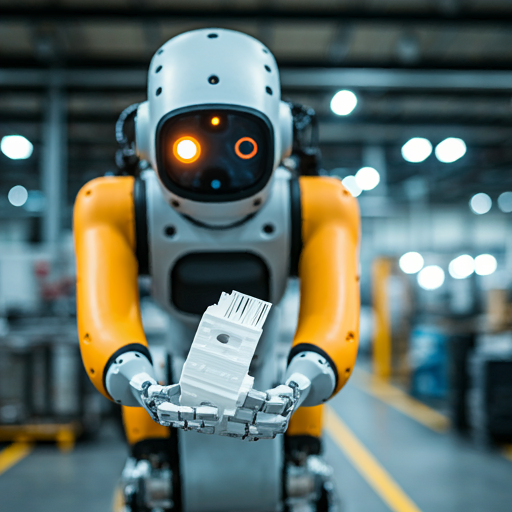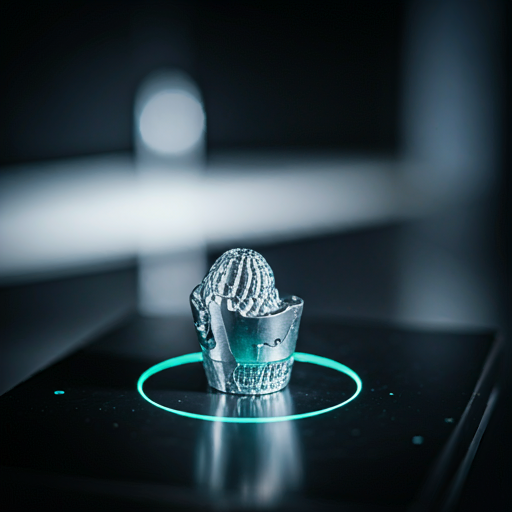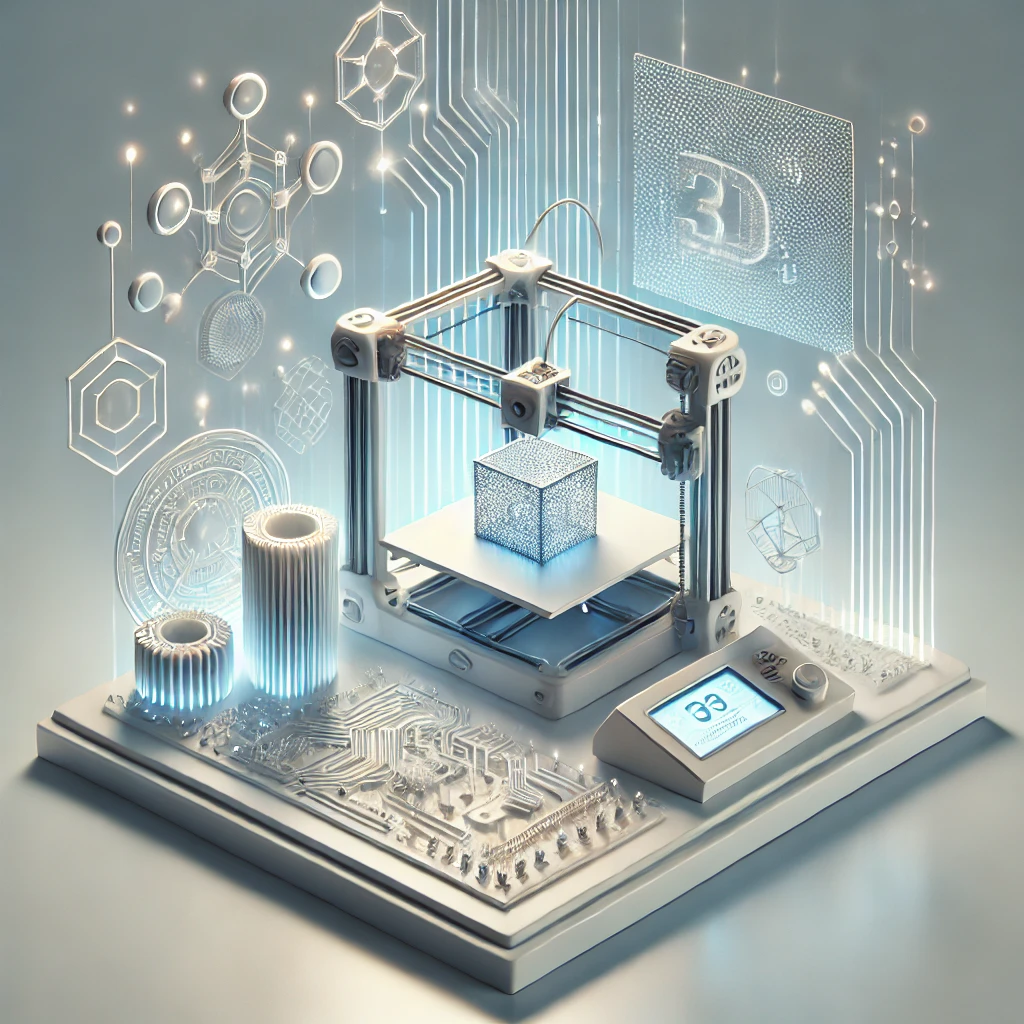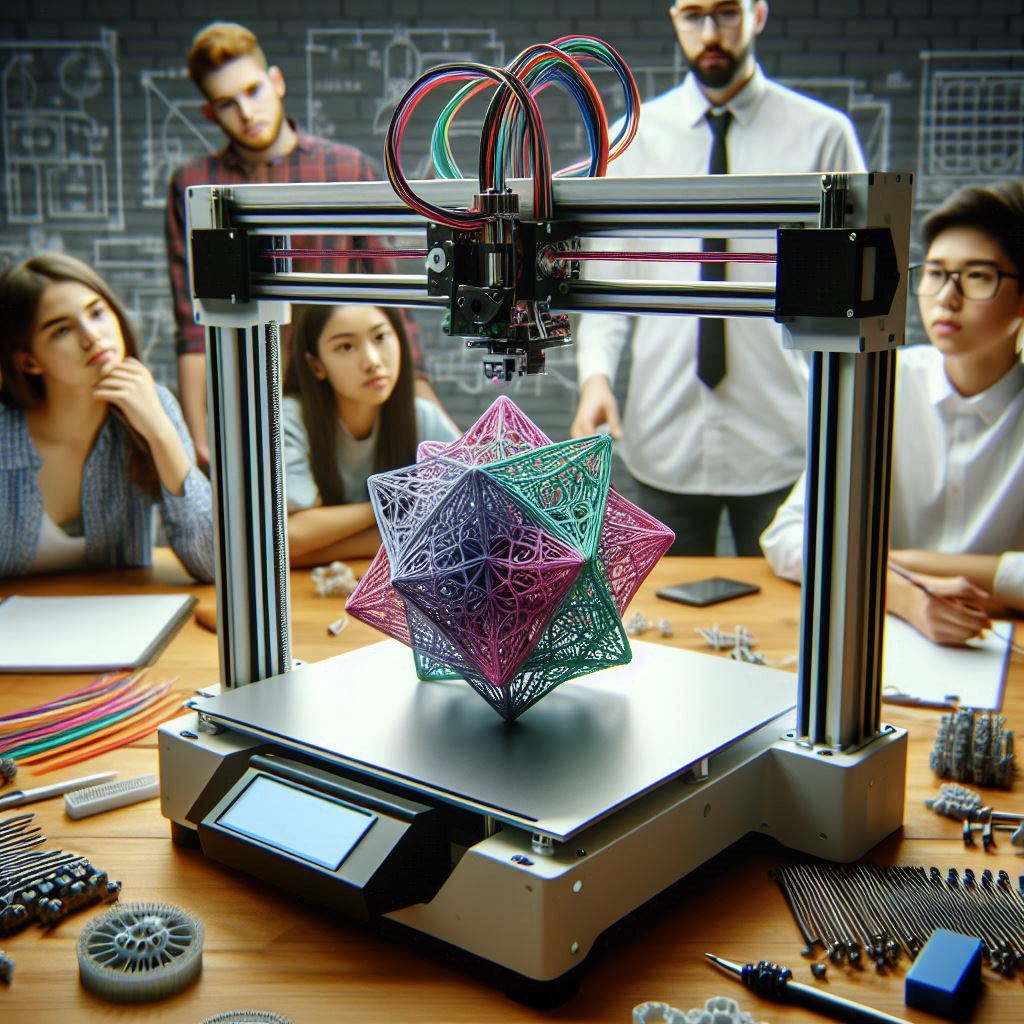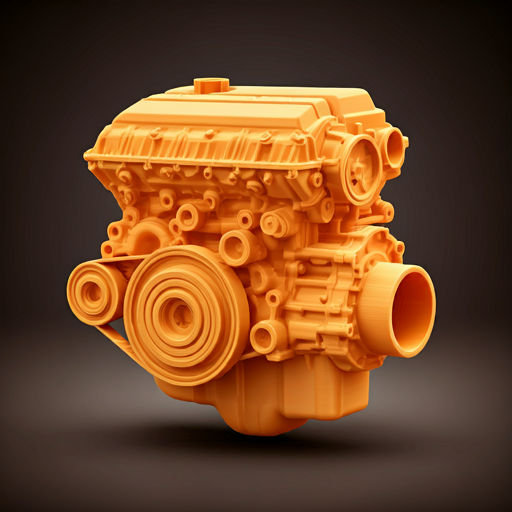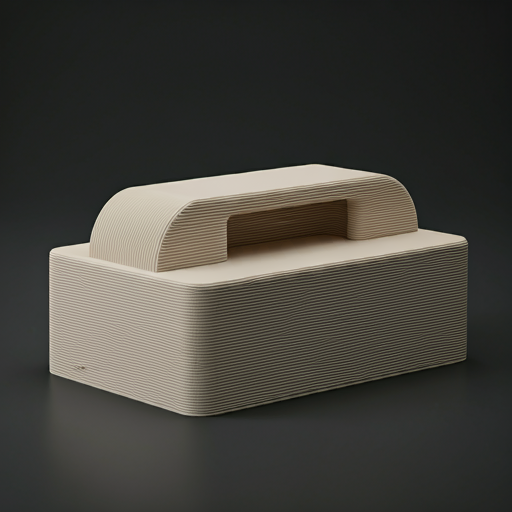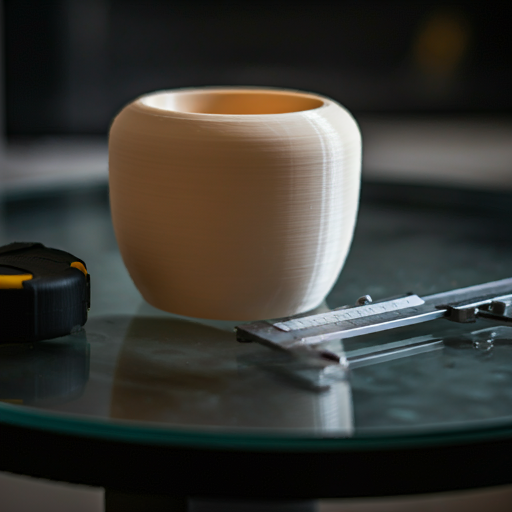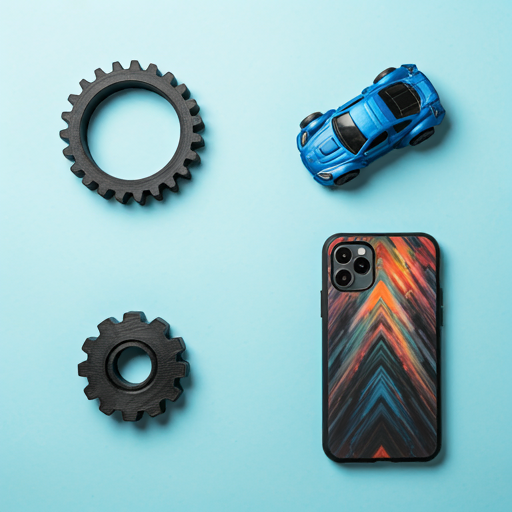
Introduction to Desktop and Industrial 3D Printer
FDM technology is the most suitable technology of 3D printing that is extensively used for rapid prototyping, quick scale modelling and part production for many Engineering as well as non-Engineering applications.Fused Deposition Modeling (FDM) 3D printing is a widely adopted additive manufacturing technology that operates by extruding thermoplastic filaments layer by layer to build objects from digital designs. Beginning with a CAD model, slicing software converts it into instructions (G-code) for the printer. The printer then heats and deposits the filament onto a platform, solidifying it to form each layer of the object. FDM is favored for its affordability, user-friendly operation, and versatility in using materials like PLA, ABS, PETG, Nylon, and TPU, each offering distinct properties suited for various applications from prototyping to functional part production. Due to the greater accessibility and decent part accuracy it is one of the most sought after printing technologies .
When we speak about FDM technology , it can generally be divided into 2 types:
- Desktop 3D printing
- Industrial 3D printing
In this article, we will discuss in details the differences between these two types of FDM 3D printing and come to a conclusion as to which 3D printing technology will favour you based on the application .
What Is Desktop 3D Printing and Industrial 3D Printing ?
Both Desktop as well as Industrial FDM 3D printers essentially use material extrusion and layer by layer deposition to print the desired part, Both printing technologies have their advantages , but for comparison we will take the most important aspects into consideration , they are:
- Maximum printable size
- Accuracy of Print
- Cost Of Printer
- Material Compatability
- Design Guidelines
- Type Of Support Structures
- Volume of Parts and finally
- Production Type
We will discuss the scope of each aspect in this blog, so, LET'S GET STARTED!
1.Maximum Printable Size

This refers to the maximum size of print that can be obtained from each printer, as obvious as it seems , Industrial 3D printers will offer greater advantage in this regard.
Since most of the Industrial application of 3D printing using FDM will be directed towards printing bigger and more accurate parts it becomes very essential for Industrial Printers to have more work volume to print.
Considering the level of application for desktop FDM printers to be more towards the Smaller components ( scale models and small engineering components ) and non-engineering components , it is quite useful in providing quick rapid printing for the 'not-so-big' parts.
Maximum part Dimensions :
| Industrial Printer | 900 x 600 x 900 mm |
| Desktop Printer | 200 x 200 x 200 mm |
2.Accuracy Of Print

Industrial printers have higher accuracy compared to Desktop printers , this is because Industrial printers are required to print parts of higher dimensional tolerances and accuracy for industrial applications .
Desktop printers are seldom preferred to print parts for industrial applications and hence suffer from lesser dimensional accuracy in their prints.
Desktop printers are seldom preferred to print parts for industrial applications and hence suffer from lesser dimensional accuracy in their prints.
Accuracy range :
| Industrial Printer | ± 0.15mm to ± 0.20mm |
| Desktop Printer | ± 1.0mm |
3.Materials

Desktop and Industrial printers do not share the same material compatibility for printing, due to the more advanced technology used in Industrial printers and owing to its application demands , Industrial printers can print using many more materials as compared to desktop printers.
This does not mean that desktop printers are limited to using only a few materials , but, it just means to say that , for more indicate and specific material requirements , it is always a better choice to go with Industrial printers as they offer better material versatality.
Materials Available :
| Industrial Printer | ABS, PC, UTEM |
| Desktop Printer | ABS, PLA, PETG |
4.Design Guidelines
Many factors such as layer thickness and wall thickness are termed as the design guidelines of any design. The comparison between the minimum dimensions that are printable is another important aspect to consider while choosing the mode of FDM printing.
In general desktop printers can be used to print thinner sections due to the smaller nozzle size.
Desktop printers are seldom preferred to print parts for industrial applications and hence suffer from lesser dimensional accuracy in their prints.
Design Guidelines:
| Industrial Printer |
|
| Desktop Printer |
|
5.Support Structures

The type of support structures that are used in Industrial printers are basically water soluble , therefore surface finish and dimensional accuracy are preserved.
In Desktop printers , most of the support structures are based on the same material that the part is printed in , therefore it needs removal post printing , and surface correction too.
In Industrial FDM printers there are 2 nozzles which simultaneously extrude materials , one for support and the other for the part .
This way, the time consumed for printing is reduced considerably, as opposed to the single nozzle operation that is used in Desktop printers.
| Industrial Printer | Water Soluble |
| Desktop Printer | Same As Printing Material |
6.Production Type
Technically , the main advantage of Industrial Printers is that more components of similar fashion can be printed at the same time , this is especially useful when we talk about batch production of components which normally happens in Industries.
Due to this Industrial FDM printers can be utilised for Low and Medium sized production , depending on the complexity of the design and size of each component.
However desktop printers don not have this quality and can only be used for unit production , or in the best case scenario they can be used for producing a batch of parts by separately printing them , therefore they generally consume more time to print the same number of components when compared to Industrial printers.
| Industrial Printer | Low and Medium production |
| Desktop Printer | Only Low volume Production |
7.Cost Of Printer
By now it will be very clear to us that Industrial printers are costlier than desktop printers , firstly owing to the size , material versatility , Accuracy and technological advancements that are involved in the printing process.
It is safe to say that Desktop 3D printers are affordable to many of us , but due to their limitations in terms of applications they cannot be used for a wide range of applications.
Overall the prices of both modes of printers vary in a large spectrum with desktop printers starting from as low as $500 and going to in the ball park of $5,000.
Whereas industrial printers can set you back by around $ 50,000
| Industrial Printer | Starts @ $ 50,000 |
| Desktop Printer | $ 500 - $ 5,000 |
Benefits of FDM Industrial and Desktop 3D Printers
| FDM Industrial 3D Printer Benefits | FDM Desktop 3D Printer Benefits |
|---|---|
| Higher dimensional accuaracy,typically ±0.15% with ±0.2mm lower limit. | Significantly lower machine and material costs |
| Faster print speeds for quicker turnaround times | Compact size suitable for home, office, or classroom use. |
| A wider range of high performance thermoplastics like Ulterm, Nylon12 | Ideal for basic prototyping, education, and small non-critical parts |
| Larger bulid volumes up to 914 x 610 x 914 mm | Highly accessible and easy to set up |
Limitations of FDM Industrial and Desktop 3D Printer
| FDM Industrial 3D Printer Limitations | FDM Desktop 3D Printer Limitations |
|---|---|
| Higher machine and material costs compared to desktop | Lower dimensional accuracy, typically ±1% with ±1mm lower limit |
| Requires more training and skill to operate effectively | Limited build volumes, rarely exceeding 200 x 200 x 200 mm |
| Larger physical footprint not suitable for home/office | Fewer material options, mainly PLA, ABS, PETG |
| More complex setup and maintenance requirements | Inconsistent point quality and repeatability issues |
Applications of FDM Industrial 3D Printer

Fused Deposition Modeling (FDM) is a popular industrial 3D printing technology known for its versatility, ease of use, and cost-effectiveness. Here are detailed descriptions of its applications across various industries:
1.Aerospace and Defense
FDM technology is used in aerospace and defense for producing lightweight and durable components, such as air ducts, brackets, and housings. Its ability to create complex geometries allows for the development of parts that are both strong and lightweight, which is critical for aerospace applications. Its capability to print with high-performance thermoplastics, like ULTEM and PEEK, ensures parts can withstand extreme conditions.
2.Automotive
In the automotive industry, FDM printers are employed to rapidly prototype vehicle components, enabling quick iteration and testing of new designs. This helps accelerate the development cycle and improve the performance and safety of new parts. The ability to print with durable materials makes it suitable for producing parts that need to withstand the harsh conditions of automotive environments.
3.Healthcare and Medical
FDM 3D printing in healthcare is used to create custom prosthetics, orthotics, and anatomical models for surgical planning and education. Its ability to produce patient-specific models aids in precision and personalization of medical treatments. Biocompatible materials available for FDM printing make it possible to produce parts suitable for direct patient contact.
4.Manufacturing
FDM printers are widely used in manufacturing for creating custom tools, jigs, and fixtures, which streamline production processes and enhance efficiency. They enable the on-demand production of replacement parts, reducing inventory costs and downtime. The robustness and precision of FDM-printed components make them ideal for various manufacturing applications.
5.Consumer Goods
In the consumer goods sector, FDM 3D printing enables the creation of customized products such as footwear, eyewear, and home accessories. It allows for rapid prototyping, facilitating the quick development and testing of new product designs. This technology empowers brands to deliver unique and innovative items to the market, enhancing customer satisfaction.
Applications of FDM Desktop 3D Printers

Desktop Fused Deposition Modeling (FDM) 3D printers are versatile tools that serve a wide range of applications across various fields. Here are detailed descriptions of their applications:
1.Prototyping and Product Development
Desktop FDM 3D printers are essential for rapid prototyping and product development. They enable designers and engineers to quickly create physical models of their concepts, allowing for fast iteration and testing. This accelerates the design process and helps identify and resolve issues before moving to mass production.
2.Education and Training
In educational settings, desktop FDM 3D printers provide students with hands-on experience in design, engineering, and manufacturing. They can be used to create models and tools for various academic projects, enhancing understanding and engagement. From STEM subjects to art and design, these printers help bring theoretical concepts to life, making learning more interactive and enjoyable.
3.Medical and Dental
Desktop FDM 3D printers are used in the medical and dental fields to create custom-fit prosthetics, orthotics, and dental appliances. They enable the production of patient-specific anatomical models for surgical planning and practice, improving the accuracy and outcomes of medical procedures. Dentists use FDM printers to fabricate crowns, bridges, and orthodontic devices directly in their offices, reducing wait times and enhancing patient care.
4.Home and DIY Projects
Desktop FDM 3D printers are essential for rapid prototyping and product development. They enable designers and engineers to quickly create physical models of their concepts, allowing for fast iteration and testing. This accelerates the design process and helps identify and resolve issues before moving to mass production.
5.Art and Design
Artists and designers use desktop FDM 3D printers to explore new forms of creative expression. They can produce complex and detailed sculptures, jewelry, and other artworks that would be difficult to create by hand. Desktop FDM printers enable artists to quickly prototype and iterate on their designs, leading to innovative and unique creations.
Conclusion
Fused Deposition Modeling (FDM) 3D printers, whether industrial or desktop, offer transformative capabilities across a multitude of applications, driving innovation and efficiency in diverse fields.
Industrial FDM 3D printers are tailored for large-scale production and demanding environments, excelling in sectors such as aerospace, automotive, healthcare, and manufacturing. Their ability to handle high-performance materials and produce robust, complex components makes them invaluable for applications requiring precision, durability, and compliance with stringent industry standards. These printers facilitate rapid prototyping, on-demand manufacturing, and the creation of custom tools and fixtures, significantly enhancing production processes and reducing costs.
On the other hand, desktop FDM 3D printers democratize access to 3D printing technology, making it affordable and accessible for small businesses, educational institutions, hobbyists, and entrepreneurs. They are ideal for rapid prototyping, personal projects, educational purposes, and small-scale production. Desktop FDM printers enable users to explore creativity, innovate, and bring their ideas to life with relative ease and minimal investment. They support a wide range of applications, from custom consumer goods and art to medical models and agricultural tools.
Both types of FDM 3D printers play crucial roles in their respective domains, contributing to advancements in design, manufacturing, and everyday problem-solving. Together, they showcase the versatility and transformative potential of 3D printing technology in the modern world.
